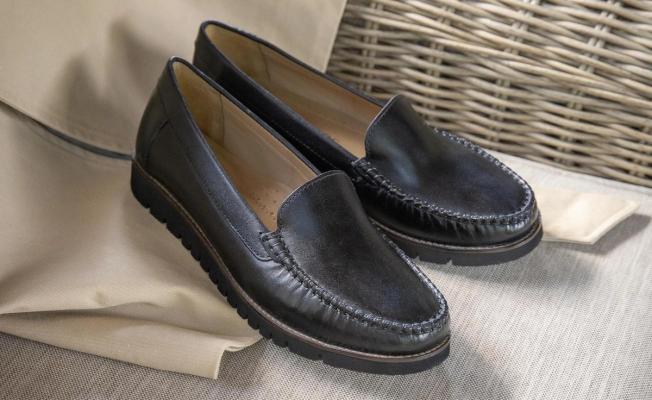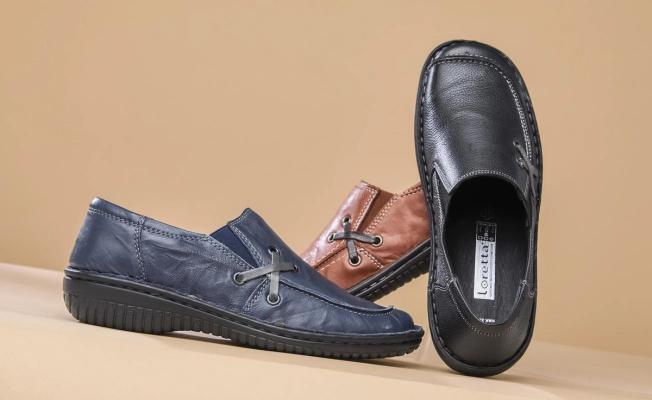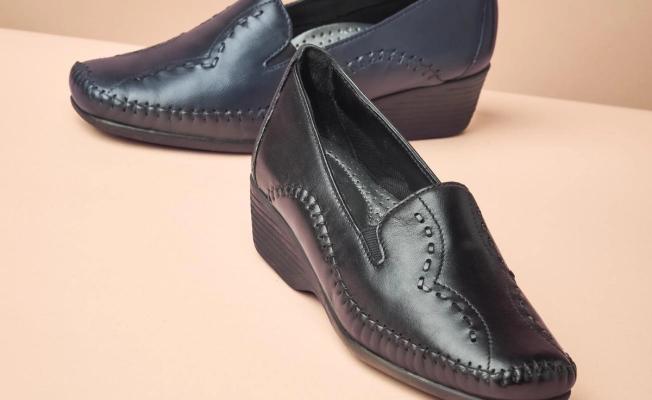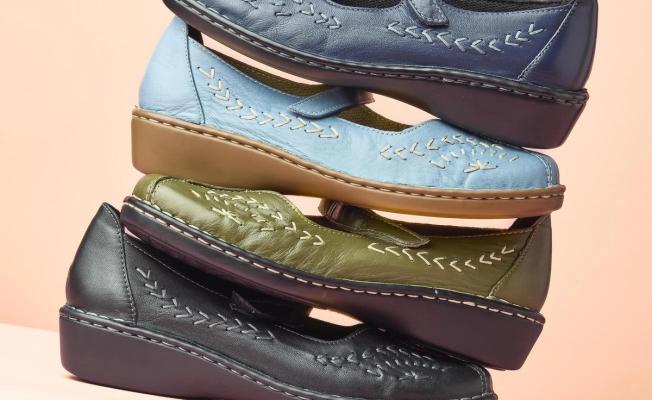
How to Fix Scuffed Leather Boots and Shoes: Leather Care Guide
1 October 2025
Scuff marks on leather shoes and boots are an inevitable part of wearing them, but you’ll be pleased to know they’re often easy to fix. With the right products and the right knowledge, you can keep your favourite footwear looking polished and pristine for years to come.
In this guide, we’ll explain the most common causes of scuffing, how to remove scuff marks from leather shoes and boots, and what you can do to prevent future damage. Here’s what we’ll cover:
- The main causes of scuff marks on leather boots and shoes
- What you’ll need to fix scuffs
- Seven methods for removing scuff marks
- How to prevent scuff marks in future

The Main Causes of Scuff Marks on Boots and Shoes
Scuff marks usually appear when your leather shoes or boots come into contact with abrasive surfaces. This could be anything from a rough pavement edge to the underside of a desk, and they’re easy to pick up as you go about your day.
Unlike deep scratches or gouges, scuff marks usually affect only the surface layer of the leather rather than penetrating all the way through. They may appear as dull, lighter patches where the colour or polish has been rubbed away.
Leather is a natural material, and without regular maintenance, it can become dry or worn which makes it more vulnerable to surface damage. That’s why keeping your leather conditioned and protected is just as important as knowing how to treat marks when they appear.
What You'll Need Before You Start
Depending on the methods you use from the list below and the type of leather your shoes are made from, you'll need some of the items from this list:
- A soft cloth
- Leather conditioner
- Leather polish
- Applicator brush
- Leather repair cream
- A white rubber
- Petroleum jelly
- Olive oil
7 Methods to Remove Scuff Marks from Leather
Whether it’s a light surface scuff or a more noticeable mark, these tried-and-tested methods will help. Remember to always test a small, inconspicuous area first to make sure the treatment doesn’t affect the colour or finish.
1. Buff the Mark Gently with a Soft Cloth
Sometimes a light scuff actually turns out to be a patch of displaced polish or wax rather than actual damage to the leather. In these instances, gently buffing the area with a clean, dry, soft cloth can help redistribute the product and minimise the appearance of the mark. Use small, circular motions and avoid pressing too hard, letting the texture of the cloth do the work.
Best for: smooth or waxed leather shoes and boots.

2. Use a Leather Conditioner
If your leather is looking dull or slightly worn, a high-quality leather conditioner can have a significant impact. Just apply a small amount of conditioner to a soft cloth and massage it gently into the scuffed area with light circular motions. This process rehydrates the leather and can reduce scuffs by restoring some of the leather’s natural oils.
Over time, conditioning also keeps leather supple and less prone to future surface damage. It’s one of the easiest ways to maintain the longevity and appearance of your footwear.
Best for: all smooth and full-grain leather types.
3. Apply a Matching Leather Polish
When scuff marks result in colour loss, a good leather polish matched to your shoe’s tone can help restore consistency. Use a soft cloth or applicator brush to apply a small amount of polish in thin, even layers, allow it to dry fully, then buff with a clean cloth to achieve a smooth shine.
This method not only disguises scuffs but also helps create a protective finish that can resist future marks.
Best for: smooth, coloured leather shoes and boots.

4. Use a Leather Repair Cream
For more stubborn or deeper scuffs, you might need to use leather repair cream or balm. These products are thicker than polish and can help fill in minor surface imperfections. Just apply a small amount using your fingertip or an applicator sponge, and blend gently until the cream is absorbed and the mark is less visible.
Many repair creams come in a range of colours, so make sure you choose one that closely matches your leather.
Best for: scuffed, coloured, smooth leathers with moderate surface wear.
5. Try a White Eraser for Light Scuffs
Sometimes, the simplest solutions are the most effective. A clean, white rubber (the kind you’d use to remove pencil from paper) can be surprisingly good at lifting light scuff marks from leather. All you need to do is rub the mark gently and gradually, using small, controlled motions.
Avoid using coloured rubbers as they may transfer dye onto your shoes, and make sure to brush away any residue when you’re done.
Best for: matte, dry-finish leathers or lighter-coloured styles.

6. Use Petroleum Jelly or Olive Oil
If you're in a hurry, common household items like petroleum jelly or olive oil can sometimes mask small scuffs. Dab a tiny amount onto the affected area, let it sit for a few minutes, then gently buff with a clean cloth for a temporary sheen that can help restore the appearance in the short term.
While these methods aren’t ideal for long-term maintenance, they can buy you some time until you can properly treat your shoes.
Best for: emergency use on smooth or synthetic leathers.
7. Seek Professional Help
If a scuff has penetrated beyond the surface or damaged the structure of the leather, it’s time to call in the professionals. Cobblers and leather repair specialists have access to tools, dyes, and treatments that aren’t available to consumers.
They can also assess the extent of the damage and advise on the best method of restoration to ensure your shoes are saved, rather than having to rely on temporary DIY fixes.
Best for: premium leathers, luxury brands, the pair you just can’t live without, or shoes with structural damage.
Got scuff marks on non-leather shoes? Check out our detailed guide for simple, effective ways to remove them from different shoe materials.

How to Prevent Scuff Marks
While you can’t avoid wear and tear entirely, there are a few ways to reduce the chance of scuffs forming in the first place:
Regular conditioning: keep your leather nourished and supple with regular applications of leather conditioner. Dry, brittle leather is more prone to marks.
Polish frequently: a good polish not only restores colour but also adds a protective layer to the surface.
Use shoe trees: these help maintain the shape of your leather footwear and minimise creasing, which can lead to cracking and surface damage over time.
Store properly: avoid throwing shoes into the cupboard where they might scrape against each other. Instead, use dust bags or boxes to keep them protected.
Watch your step: be careful when you're walking, especially in crowded or rough-surfaced areas that might scuff the toe or sides.

Explore Our Leather Boots Collection
We hope this guide has been helpful in getting scuff marks out of your favourite pair of leather shoes. And if you’re in the market for a new pair, our leather boots collection has something for every style and season. Each pair is made with high-quality materials and craftsmanship, ensuring long-lasting wear that’s worth looking after.
If you’re ever unsure which products to use or how to restore a particular finish, our team is happy to help. Get in touch or pop into your local store for advice, fittings, or product recommendations.
